On the National Register of Historic Places
From military structures to shade tobacco barns, our region has preserved its historical past with recognition on the National Register of Historic Places and on-site historic markers. An “Old-Florida” historian-buff must see.
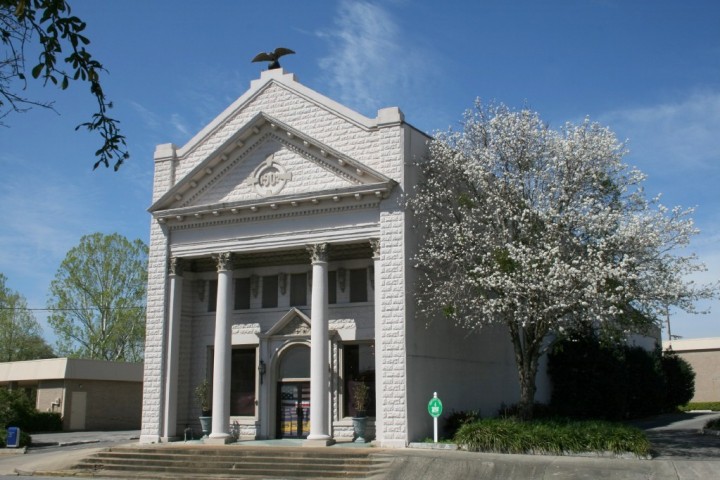
Historic First National Bank Building in Marianna
The Historic First National Bank Building is a contributing building on the National Register of Historic Places and is part of the designated Marianna Historic District. Built in 1902, it was constructed in the Classical Revival architectural style and was considered to be one of Florida’s finest banking structures of its day. One of its most unique features is the beautiful ornamental eagle that crowns the peak. Originally two eagles stood guard on top of the two massive columns that rise on either side of the front facade, the one you see today was moved to the peak after its twin was lost, its missing remains a mystery. The building stood as an active financial institution and downtown district business hub for over three-quarters of a century, housing both the First National Bank and South Trust Bank at some point from 1902 thru late-1980. Fun fact–Historians boast that this bank building housed the first use of the then-modern-day adding machine (c. mid-1900s). The City of Marianna acquired the building to preserve its glory and opened it as a multi-use cultural facility in October 2016.
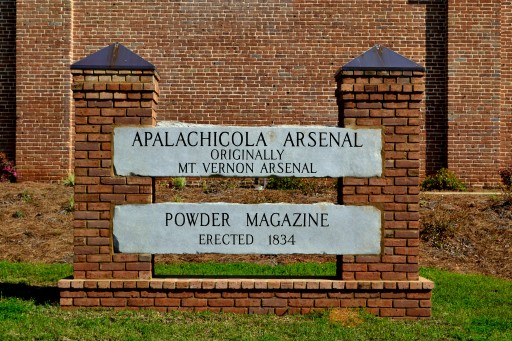
Federal Arsenal in Chattahoochee
The Federal Arsenal has been restored for use as a history museum and conference center. It was built between 1832 and 1839 to store arms for the U.S. War Department during the Indian Wars. The 5 feet thick walls were crafted by English artisans using bricks made on site.
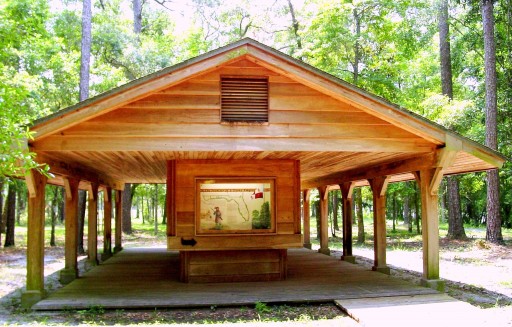
Fort Gadsden Historic Site
Called the “Hill of Good Vistas” by the Spanish and “Achackweithle” by Native Americans, the Fort Gadsden Historic site on the eastern bank of the Apalachicola River—so tranquil in appearance today—was the focus of a series of international conflicts that literally determined the destiny of nations. At various times Prospect Bluff hosted a Spanish settlement, a British Fort, a Negro Fort, and the U.S. Fort Scott and Fort Gadsden. Conflicts involved escaped Negro slaves; Creek, Choctaw, and Seminole Indians; British and American forces; and Confederate and Union troops. This site is a National Historic Landmark and is listed in the National Register of Historic Places. Facilities include an information kiosk with historic dioramas depicting early settlements and major battles, picnic tables, nature trails, and restrooms.

Florida State Hospital Grounds in Chattahoochee
From 1834-1839, the Federal Arsenal, also known as the Apalachicola Arsenal, was built on high bluffs settled by the Creek and Seminole Indians. It originally consisted of a number of buildings surrounding a four-acre parade ground, connected by a 30-inch thick brick wall. Andrew Jackson was sent to take command of the American armies during the Second Seminole War from 1835-1842. Jackson stayed in the Arsenal Quarters, one of two structures still standing today. In 1869, the United States gave the land and buildings to the State of Florida. It then became a prison but was changed to a mental institution in 1876, known as the Florida State Hospital.
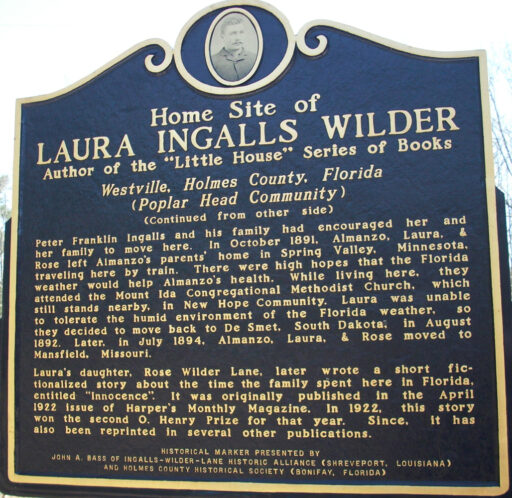
Laura Ingalls Wilder Home Site
On October 1, 1890, three of Laura Ingalls Wilder’s relatives began a trip from Stockholm, Wisconsin down the Mississippi River on a sailboat named “Edith” to find a new place to settle. Located in the North Florida piney woods, this is the home site of Laura Elizabeth Ingalls Wilder, Almanzo James, their daughter, Rose Wilder, Peter Franklin Ingalls, and his wife, Mary Edith McGowan Ingalls. They lived here from October 1891 – August 1892, when they returned north due to Laura’s inability to tolerate the humid environment. Laura’s daughter, Rose Wilder Lane, later wrote a short fictionalized story entitled “Innocence” about the time the family spent here in Florida. Laura’s first book, Little House in the Big Woods, was published in 1932 when she was 65 years old. She eventually published 13 other books, including Little House on The Prairie in 1935.
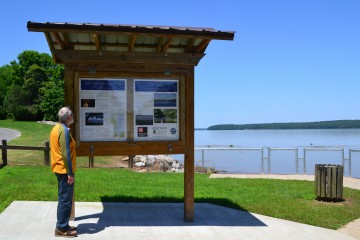
Mission San Carlos de Chacates
Located at the Woodruff Dam Overlook, this Spanish Heritage Trail stop provides a stunning view of the Woodruff Dam and Lake Seminole. As noted at the interpretive kiosk, it is also the site of Jackson County’s last Spanish Mission. Discovered by archaeologists prior to the construction of the dam, Mission San Carlos de Chacatos was built between 1680-1694 to serve the Christian members of the Chacatos, a Native American group was living between the Chipola River and Holmes Creek when Spanish missionaries first arrived in the area in 1674.
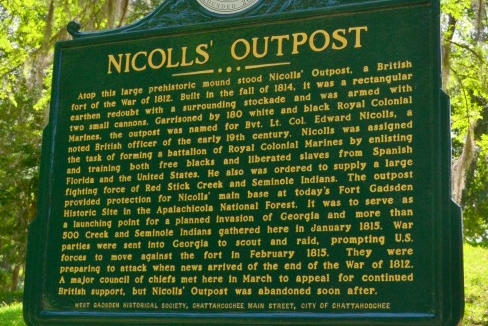
Nicolls Outpost & Indian Mound
Built in the fall of 1814, this British fort was armed with two small cannons and garrisoned by 180 Royal Colonial Marines of both free and liberated slaves from Spanish Florida. It sat atop a large residential Indian Mound built in the Fort Walton Period (1450-1650 AD) that overlooks the Apalachicola River. The site, located in Clyde Hopkins Park, has interpretation, benches, and great views.
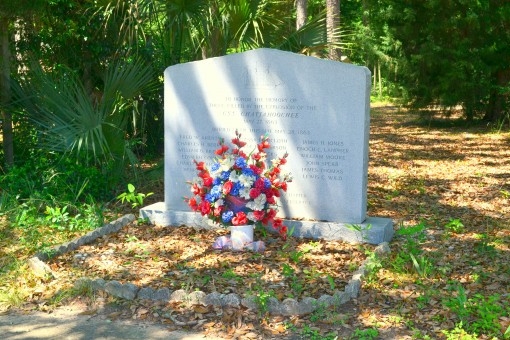
USS Chattahoochee Marker
This is the monument to the men who died in the accidental explosion and sinking of the C.S.S. Chattahoochee, a gunship that operated on the Chattahoochee and Apalachicola Rivers. The Chattahoochee often docked at the arsenal wharf, which no longer exists. The ship sank following a boiler explosion near Blountstown, Florida. The men killed in the explosion were brought back upriver to Chattahoochee and were buried near the arsenal. The remains of the ship can be seen today in the Port Columbus National Civil War Naval Museum in Columbus, Georgia.
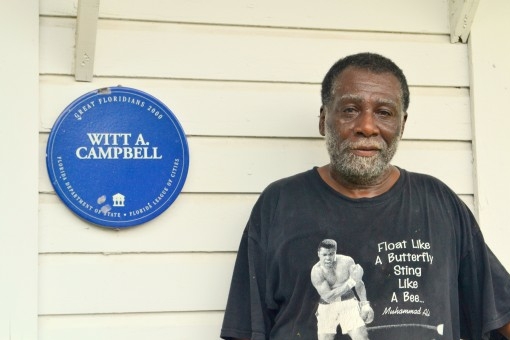
“Great Floridian 2000 Plaque” honoring Witt A. Campbell
Across the street from the Stevens School is a small white frame building with a blue” Great Floridian 2000 Plaque” honoring Witt A. Campbell, who served as the financial officer for the Good Shepherd Lodge of the Order of Emancipated Americans until his death in 1996. Born in Quincy he served the Gadsden County school system for 44 years. During the 1960s civil rights movement, Campbell registered voters in Gadsden County. In 1983 he was elected to the Gadsden County School Board.
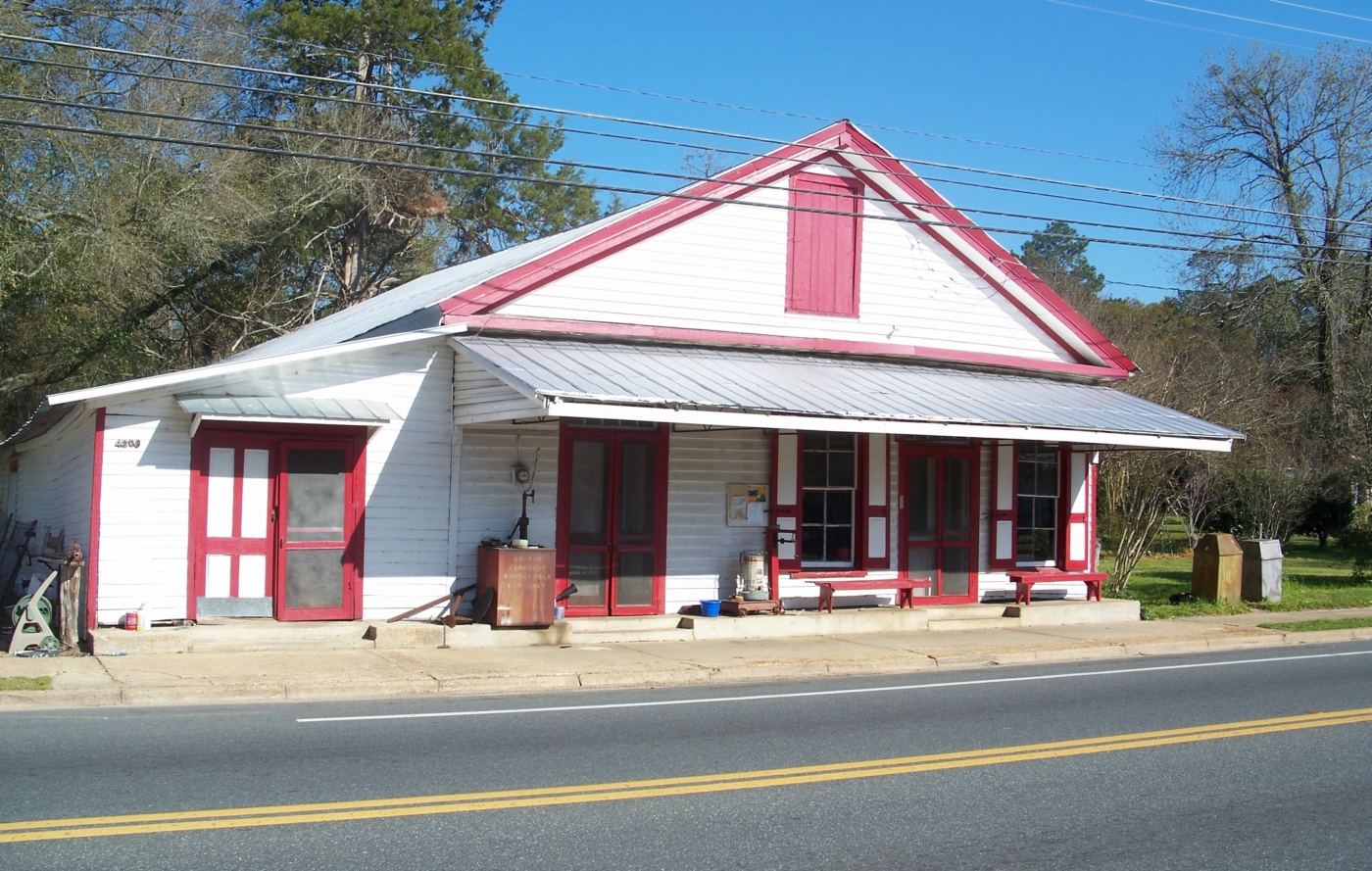
Pender’s Store
The store has served Greenwood and the surrounding rural area since its construction in 1869. A one and one-half story frame vernacular building, the site was placed on the National Register of Historic Places in 1974. Remnants of the past are everywhere—hat boxes, patent medicine bottles, hooks for harnesses and mule collars, catalogs of dresses, hats, and shoes, and ledgers recording decades of purchases of Jackson County citizens. People came to Pender’s Store from 15 to 20 miles away on mules and wagons. Notes were held on livestock and crops but not land. A single hog was enough to open an account which is a perfect analogy of the sign of the times.
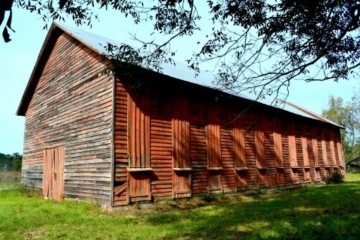
Davis Shade Tobacco Curing Barn & Produce Market
In 1828, Governor William P. Duval introduced Cuban tobacco to the territory of Florida. The following year, Virginia and Cuban tobacco seeds were blended in Quincy and renamed the “Florida Wrapper.” As a result, the culture of shade-grown cigar wrapper tobacco became a dominant factor in the social and economic development of Gadsden County. The Davis Shade Tobacco Barn, located seven miles west of Quincy on SR 65, dates from 1942. Stop by their produce stand next door to see their impromptu “Shade Tobacco Museum” of photos, artifacts, and literature.
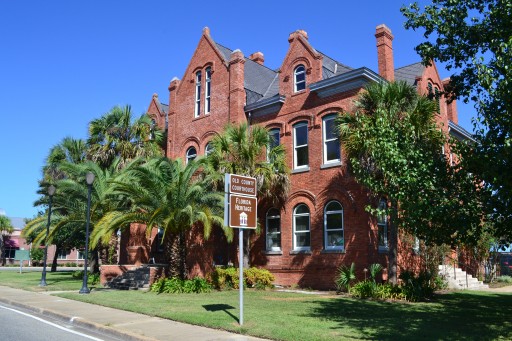
Calhoun County Courthouse
This 1904 Courthouse was designed by architects Benjamin Bosworth and Frank Lockwood of Montgomery, Alabama, and is one of only two Florida courthouses built in the Romanesque Revival style. The courthouse was used until 1973 when the new courthouse was constructed. It has been restored and placed on the National Registry of Historic Places. An onsite marker commemorates the 1832 Treaty of Payne’s Landing and is written in both English and Muscogee Creek.
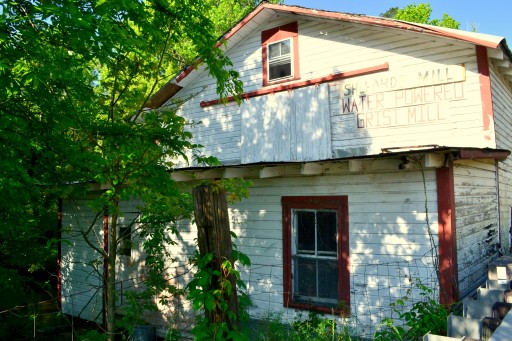
Shepard’s Mill on Telogia Creek
Built in 1875, the mill is the only commercial water-powered grist mill remaining in Florida. It was named Gadsden County’s first Historical Site and Structure. Shepard’s Mill drew its power from Telogia Creek and its mill pond is just across the road. Many Florida gristmills were built along the same design, with the water flowing beneath the actual structure. The operators of the mill once sold grits, cornmeal, cane syrup, and even high-quality Telogia Creek tupelo honey.
